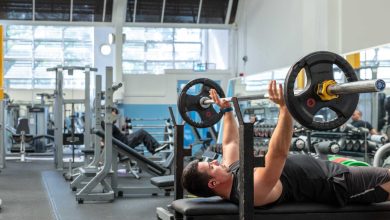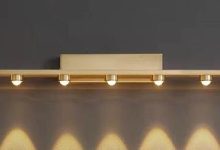PCB Assembly vs Box Build Assembly Understanding the Key Differences and How They Work Together

When it comes to electronics manufacturing, PCB assembly services and box build assembly are two essential stages in the process of creating a functional, market-ready product. However, these two services differ significantly in their roles and how they contribute to the final product. Understanding these differences is crucial for manufacturers who want to streamline production, ensure quality, and deliver reliable products to consumers.
In this article, we’ll explore what PCB assembly and box build assembly are, the differences between them, and how these two processes complement each other to create a fully functional product.
What is PCB Assembly?
PCB assembly, or Printed Circuit Board Assembly (PCBA), is the process of attaching electronic components to a printed circuit board. These components typically include resistors, capacitors, diodes, transistors, integrated circuits (ICs), and other essential parts required to form an electronic circuit.
The PCB serves as the foundation for all the electronic components and facilitates the flow of electrical current between them. During the assembly process, the board is populated with the components using two main techniques:
-
Surface Mount Technology (SMT) – Components are mounted directly onto the surface of the PCB.
-
Through-Hole Technology (THT) – Components are inserted into drilled holes on the PCB and soldered in place.
Once the components are mounted, the PCB goes through various tests, including automated optical inspection (AOI), in-circuit testing (ICT), and functional testing to ensure that the assembly is correct and functional.
PCB Assembly Process:
-
Design & Prototyping: Creating the PCB layout and designing the circuit.
-
Component Placement: Components are mounted on the PCB using either SMT or THT methods.
-
Soldering & Testing: Components are soldered onto the PCB, followed by testing to ensure functionality.
-
Final Inspection: The completed PCB is inspected and tested for defects.
Main Purpose of PCB Assembly:
-
To build the core electronics of the device that will handle the power, signals, and functions required by the final product.
-
To ensure that the electrical circuit is properly constructed and that the individual components interact correctly.
What is Box Build Assembly?
Box build assembly refers to the final integration process where the assembled PCB is placed inside its protective enclosure (often called the “box”). This process doesn’t just involve placing the PCB into a box, but also integrating the PCB with other critical components, such as connectors, displays, power supplies, sensors, and wiring.
Box build assembly can include a wide variety of tasks such as:
-
Enclosure Assembly: Housing the PCB and other components inside a protective case to ensure safety and functionality.
-
Mechanical Assembly: Installing additional components like displays, switches, buttons, and LED lights.
-
Wiring and Connectivity: Connecting the PCB to external devices via wiring, cables, or connectors.
-
Software/Programming: Loading firmware or software onto the assembled device.
-
Final Testing: Conducting final quality assurance checks and testing the product’s functionality, ensuring that all components are working together as intended.
Box Build Assembly Process:
-
Integration of PCB: The assembled PCB is placed into its designated enclosure.
-
System Integration: Additional components such as connectors, displays, and wiring are added to create a fully functional system.
-
Testing and Calibration: The integrated system is tested to ensure everything works correctly.
-
Packaging and Shipping: After final testing, the product is packaged for shipment to customers.
Main Purpose of Box Build Assembly:
-
To take the PCB and turn it into a functional, market-ready product.
-
To ensure that all components, including mechanical, electrical, and software, work together in a cohesive system.
Key Differences Between PCB Assembly and Box Build Assembly
While both PCB assembly and box build assembly are vital in the creation of an electronic product, they focus on different aspects of the process. Here are the key differences:
| Aspect | PCB Assembly | Box Build Assembly |
|---|---|---|
| Focus | Assembling the printed circuit board (PCB) with electronic components. | Integrating the PCB into a functional product housed in an enclosure. |
| Main Tasks | Component placement, soldering, testing, and inspection of the PCB. | Enclosure assembly, wiring, system integration, software loading, and final testing. |
| Objective | To build the core electronic circuit that powers the device. | To create the complete, functional product ready for use in its final form. |
| Techniques Used | SMT (Surface Mount Technology) and THT (Through-Hole Technology). | Mechanical assembly, wiring, enclosure installation, and system integration. |
| Complexity | Focuses on the electronic components and their correct placement on the PCB. | Focuses on integrating all components and ensuring they work together. |
| Testing | In-circuit testing, functional testing, and automated optical inspection. | Final system-level testing to ensure the product is fully functional. |
How PCB Assembly and Box Build Assembly Work Together
Even though PCB assembly and box build assembly have distinct functions, they are interconnected and depend on each other to produce a fully functional and reliable product. Here’s how these two stages work together:
-
Collaboration for Design and Prototyping: The design of the PCB and its components needs to be carefully planned to ensure that it will fit perfectly inside the enclosure during the box build process. Early collaboration between the PCB assembly and box build teams ensures that the PCB layout, component placement, and form factor are optimized for the final product design.
-
Streamlined Production: Once the PCB is assembled, the box build assembly process begins. The PCB must be correctly integrated into the final enclosure, which could include wiring for external connectors, screens, or power supplies. Proper communication between the two teams ensures that no mistakes are made, reducing the risk of delays or costly errors.
-
Ensuring Functionality and Performance: Box build assembly involves not only physically housing the PCB but also ensuring that the integrated product works as expected. After the PCB is mounted in its enclosure, the entire system is tested to verify that all components function together as a cohesive unit. If the PCB assembly was done correctly, this process becomes much smoother and more efficient.
-
Final Product Testing: Box build assembly also includes final testing of the product as a whole. This ensures that the device, as a complete system, meets the necessary performance and safety standards. If issues arise during final testing, they are often traced back to the PCB assembly, where troubleshooting can take place to fix any underlying problems.
Why Both PCB Assembly and Box Build Assembly Are Important
Together, PCB assembly and box build assembly form the backbone of the electronics manufacturing process. PCB assembly ensures that the core electronic circuits are properly constructed, while box build assembly ensures that these circuits are integrated into a fully functional product that can be used by consumers.
Without PCB assembly, you wouldn’t have the functional circuits needed for the product to operate. Without box build assembly, the PCB would remain a disconnected, incomplete unit, unable to perform its intended purpose in the real world. Both processes are essential for creating products that are not only functional but also reliable, durable, and ready for use.
Conclusion
PCB assembly and box build assembly are two distinct but interconnected processes in the electronics manufacturing world. While PCB assembly focuses on building the electronic circuits, box build assembly ensures that these circuits are integrated into a complete product. Understanding the differences between the two, and how they complement each other, can help manufacturers streamline their production process and ensure that the final product is both reliable and functional.
By working with specialized providers who excel in both PCB assembly and box build assembly, businesses can guarantee that their products meet the highest standards and are ready to meet the needs of end-users. The key to success lies in the seamless integration of these two stages, ensuring that the final product is more than the sum of its parts.









